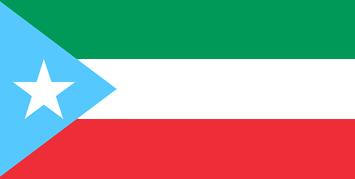
The State of Somali

The State of Somali has a very large area size ranking second next to Oromiya. At present the state comprises 9 administrative zones and 49 woredas.
CAPITAL CITY
Jijiga is the capital city of the State.
LOCATION
The State of Somali is located in the
eastern and south eastern part of Ethiopia. The State has common boundaries with
Afar and the Republic of Djibouti in the north, Kenya in the south, the State of
Oromiya in the west, and Somalia in the east and in the South.
AREA
The State of Somali has an estimated
area of about 250,000 square kilometres.
POPULATION
According to the census conducted at the
beginning of September 1997, the number of the population of
the state was 3,439,860 of which 1,875,996 were males and 1,563,864 females. The
urban residents of the State of Somali number 492,710 households in the region,
with an average of 6.6 persons per household. The State has a high sex ratio of
120 (the number of males) to 100 females.
The ethnic composition includes, Somali 95.6%, Oromo 2.25%, Amhara 0.69%, and
Somalians 0.63%, and Guragie 0.14%.
Somaligna is predominantly spoken within the State. It constitutes 95.9%. It is
also the working language of the State, Other major languages are Oromifa 2.24%,
Amaharic 0.92%, and Guragigna 0.033%.
According to the census result, 98.7% of the population are Muslim. 0.9%
Orthodox Christians, and 0.3% are followers of other religions.
MAJOR
ECONOMIC ACTIVITIES
Although most of the people of the state
of Somali mainly earn their livelihood from livestock, they practice crop
production as well. The major crops cultivated in the region are sorghum and
maize. Wheat and barley are also harvested in a smaller amount each year.
Commercial activity is another occupation that is significantly exercised in the
region.
TOPOGRAPHY
AND CLIMATE
The majority of the region has an altitude of 900 meters above sea
level and in some areas the altitude reaches 1600 meters. Of the total area size
of the State approximately 80% is flat & 7% mountainous. Regarding climate,
80% of the region is classified as "Kolla" (lowlands), 5% highland
("Dega"), and 15% of the area fall under temperate ("Woyna Dega")
category. The maximum temperature reaches 32-40°C. In the temperate ("Woyna
Dega") areas the temperature is within 20-28°C. The mean annual rainfall of
the State is estimated to be 300-500 mm.
RIVERS
AND LAKES
The State has three big rivers, namely Wabeshebele, Genale and Weybe, which
could be utilized for irrigation.
LIVESTOCK
The region claims to have about 11.15
million domestic animals (1997 G.C.) of which 2.15 million are cattle. 5.63
million are sheep and goats and 392,000 pack animals.
FAUNA
In seven zones of the region, especially
in Fiq, Afdem, Liben and Jigjiga, the presence of lots of wild animals had been
disclosed.
LIVESTOCK
The state of Somali is known for its livestock resources from which most of the
Somali people earn their livelihood. The region is estimated to have about 15.2
million domestic animals out of which sheep constitute for 53% (nearly 8 million
in number). Goats and cattle are the second and third most important domestic
animals in the State accounting for 20% (3.1 million in number) and 15% (2.3
million in number), respectively. Camels are actually the most important animals
in the day to day life of the pasturalist Somali people, and they constitute for
about 9% (1.3 million in number).
INVESTMENT
Until the beginning of 1997 the
investment office of the State of Somali has awarded investment certificates to
12 projects. The total investment capital of the projects is 28.6 million Birr
and is expected to create employment opportunity to 140 people. The major
sector, which attracted 5 investors with a total capital of 18.3 million Birr is
agriculture, five investors are engaged in industry (food manufacturing) with a
total investment capital of 4.8 million.
The state is very rich in livestock. Moreover, it is endowed with natural gum,
natural salt (in Afdem zone), natural gas oil has high potential for
investment.